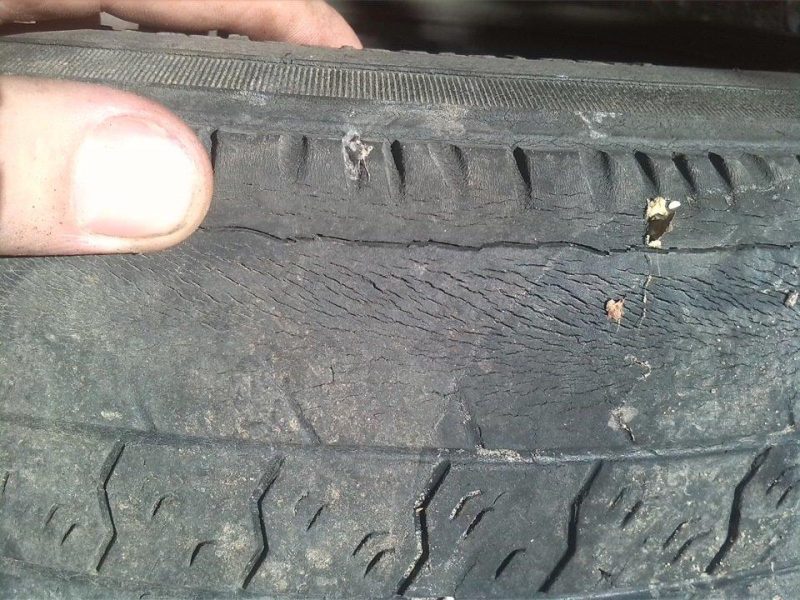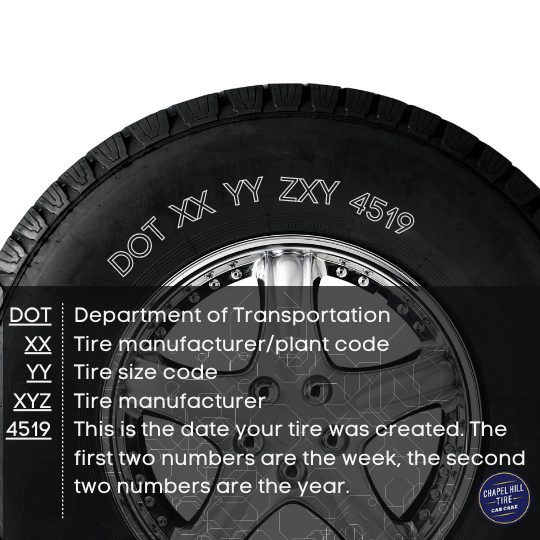
A Closer Look at Tire Aging
Content
In a year full of news, you may have missed the groundbreaking overseas tire announcement this summer: driving with old tires is now a criminal offense in the UK. They introduced this law in July, banning all tires over 10 years old. This change comes after a years-long campaign led by Frances Molloy, a mother who lost her son in a tire wear accident.
Efforts to establish laws and regulations regarding tire age in the US are ongoing, but it is not known when (or if) these laws will be enacted. Instead, local tire safety regulations are based primarily on the tire's tread. However, old tires can pose a serious safety hazard, even if they have thick tread. Here's a closer look at tire age and how you can stay safe on the road.
How old are my tires? A guide to determining the age of your tires
Tires are marked with a Tire Identification Number (TIN), which tracks manufacturing information, including the exact week of the year it was manufactured. This information is printed directly on the side of each tire. To find it, carefully inspect the sidewall of the tire. You may need to use a flashlight as these numbers may blend into the rubber. When you find your TIN, it may seem like a complicated sequence of numbers and letters, but it's actually easy to break down:
- POINT: Each bus code starts with DOT for the Department of Transportation.
- Tire factory code: Next you will see a letter and a number. This is the identification code for the factory where your tire was made.
- Tire size: Another number and letter will indicate the size of your tire.
- Manufacturer: The next two or three letters make up the tire manufacturer's code.
- Tire age: At the end of your TIN you will see a series of four digits. This is your tire age. The first two digits indicate the week of the year, and the second two digits indicate the year of manufacture.
For example, if your TIN ends with 4918, your tires were manufactured in December 2018 and are now two years old.

What's the problem with old tires?
Old tires can often look and feel like new, so what makes them unsafe? This is the change in their chemical composition through a process called thermooxidative degradation. Over time, oxygen naturally reacts with rubber, causing it to stiffen, dry out, and crack. When the rubber inside your tires is dry and hard, it can come loose from the steel belts at the base of your tire. This can lead to tire burst, tread stripping and other serious safety hazards.
Tire separation is often hard to notice, which is why many drivers don't know they have a tire aging problem until they lose control of their car. Riding on older tires can also cause sidewall distortion, tread separation (where large pieces of the tread come off), and tread blistering.
In addition to the age of rubber, thermal-oxidative degradation is accelerated by heat. States that experience higher levels of heat also tend to have higher rates of tire aging. Because fast driving also generates heat, frequent driving at high speeds can also speed up the aging process of tires.
In 2008, the National Highway Traffic Safety Administration (NHTSA) Consumer Advisory reported hundreds of deaths and vehicle injuries caused by blowout tires older than 5 years. Other studies and NHTSA data show that these numbers are increasing to thousands every year.
At what age should tires be changed?
Barring extraneous circumstances, tires have been proven to resist oxidation during the first 5 years of manufacture. This is why many vehicle manufacturers such as Ford and Nissan recommend changing tires 6 years after their date of manufacture - regardless of your tire's tread depth. However, as you can see from the NHTSA study above, 5-year tires can also cause accidents. Tire replacement every 5 years ensures the most complete safety standards.
Buying from a reliable tire shop | Chapel Hill Sheena
The age of the tires is another reason why it is important to buy a tire from a reliable tire store. For example, used tire distributors can buy old tires at low prices, allowing them to earn higher profits. Even if the "new" tire has never been driven, old tires pose a serious safety hazard.
When you need a new set of tires, call Chapel Hill Tire. Our trusted technicians provide comprehensive tire repair and mechanical services, offering a customer-centric buying experience. We also offer a Best Price Guarantee to help you get the lowest price on your new tires. Make an appointment at one of our 9 Triangle locations or buy tires online using our tire finder tool today!
Back to resources
